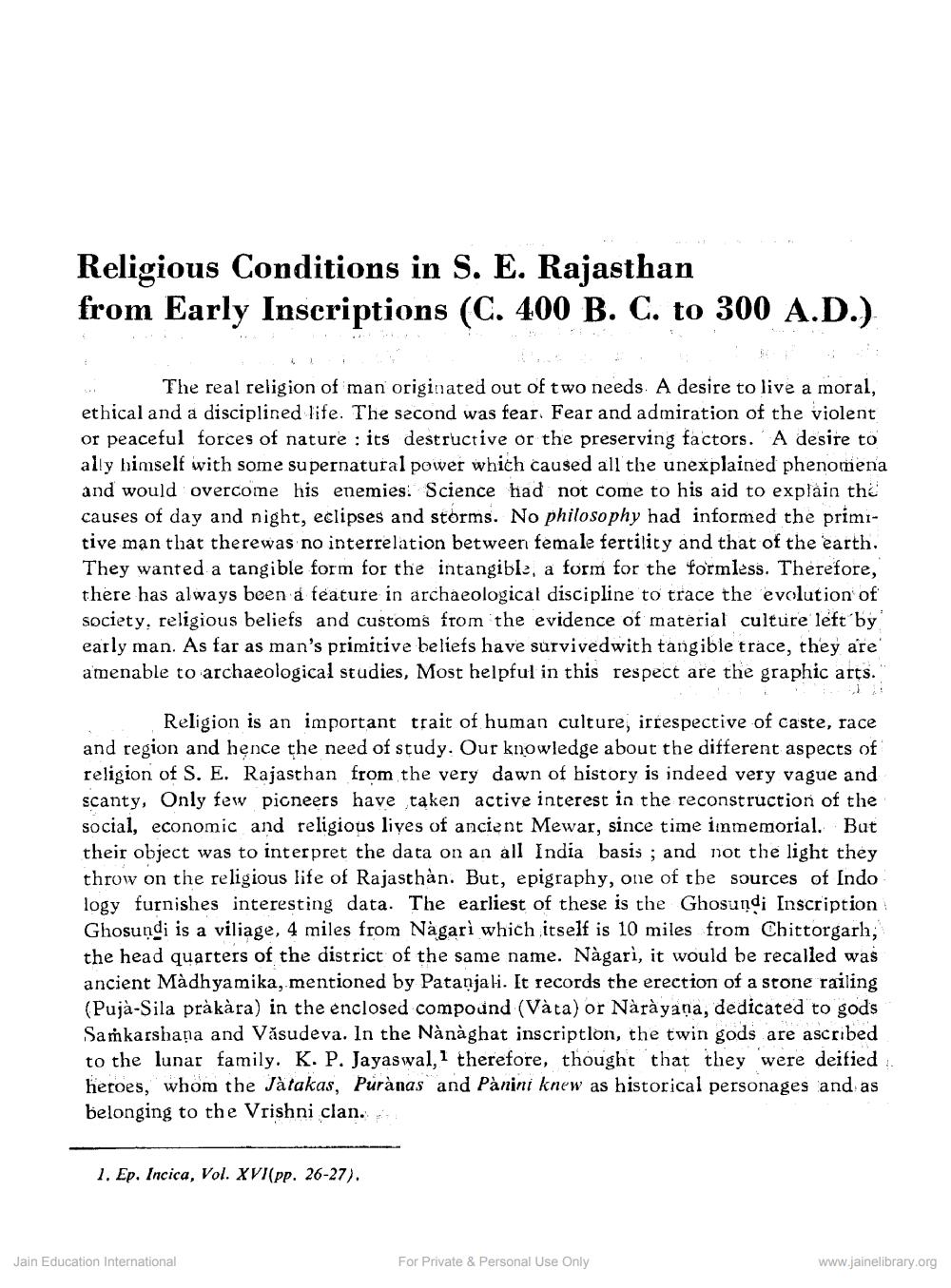Book Title: Religious Conditon in SE Rajasthan from early Inscriptions Author(s): Adris Banerji Publisher: Z_Jinvijay_Muni_Abhinandan_Granth_012033.pdf View full book textPage 1
________________ Religious Conditions in S. E. Rajasthan from Early Inscriptions (C. 400 B. C. to 300 A.D.) The real religion of man originated out of two needs. A desire to live a moral, ethical and a disciplined life. The second was fear. Fear and admiration of the violent or peaceful forces of nature : its destructive or the preserving factors. A desire to ally himself with some supernatural power which caused all the unexplained phenomena and would overcome his enemies! Science had not come to his aid to explain the causes of day and night, eclipses and storms. No philosophy had informed the primrtive mạn that therewas no interrelation between female fertility and that of the earth. They wanted a tangible form for the intangible, a form for the formless. Therefore, there has always been a feature in archaeological discipline to trace the evolution of society, religious beliefs and customs from the evidence of material culture left by early man. As far as man's primitive beliefs have survivedwith tangible trace, they are amenable to archaeological studies, Most helpful in this respect are the graphic arts. Religion is an important trait of human culture, irrespective of caste, race and region and hence the need of study. Our knowledge about the different aspects of religion of S. E. Rajasthan from the very dawn of history is indeed very vague and scanty, Only few picneers have taken active interest in the reconstruction of the social, economic and religious lives of ancient Mewar, since time immemorial. But their object was to interpret the data on an all India basis ; and not the light they throw on the religious life of Rajasthan. But, epigraphy, one of the sources of Indo logy furnishes interesting data. The earliest of these is the Ghosundi Inscription Ghosundi is a viliage, 4 miles from Nagari which itself is 10 miles from Chittorgarh, the head quarters of the district of the same name. Nàgari, it would be recalled was ancient Madhyamika, mentioned by Patanjali. It records the erection of a stone railing (Pujà-Sila pràkàra) in the enclosed compound (Vata) or Nàrayana, dedicated to gods Saṁkarshara and Vasudeva. In the Nànåghat inscription, the twin gods are ascribed to the lunar family. K. P. Jayaswal, therefore, thought that they were deified heroes, whom the Jatakas, Puranas and Panini knew as historical personages and as belonging to the Vrishni clan. 1. Ep. Incica, Vol. XVI(pp. 26-27). Jain Education International For Private & Personal Use Only www.jainelibrary.orgPage Navigation
1 2 3 4 5 6 7 8 9
